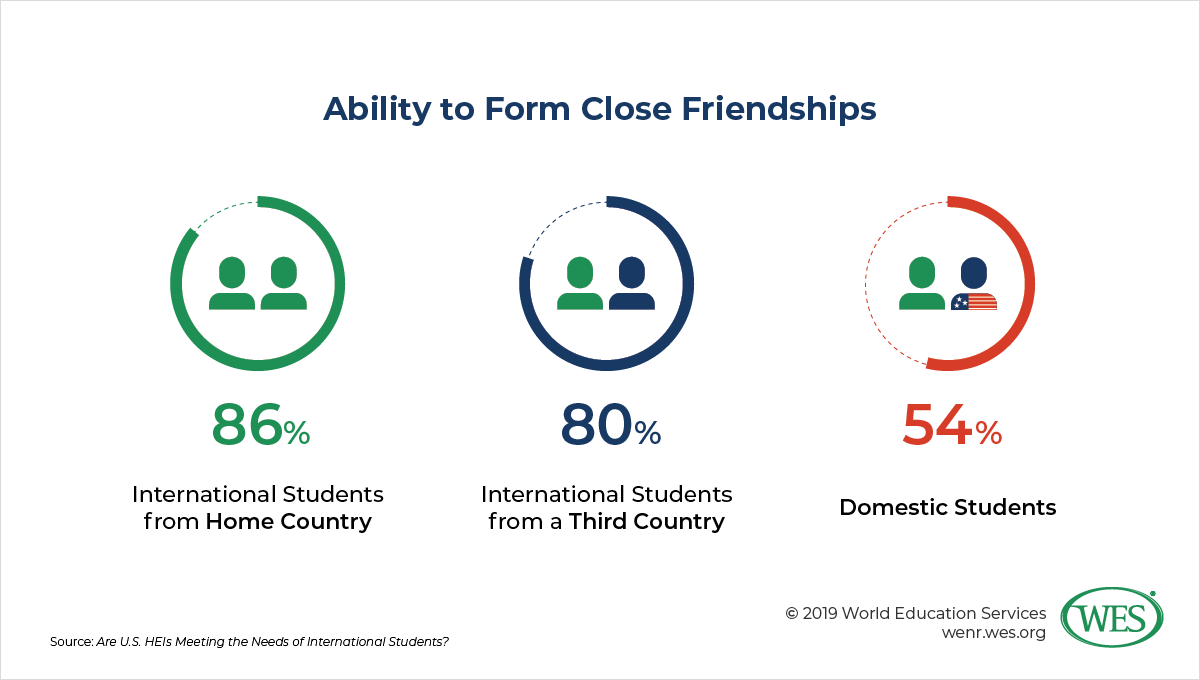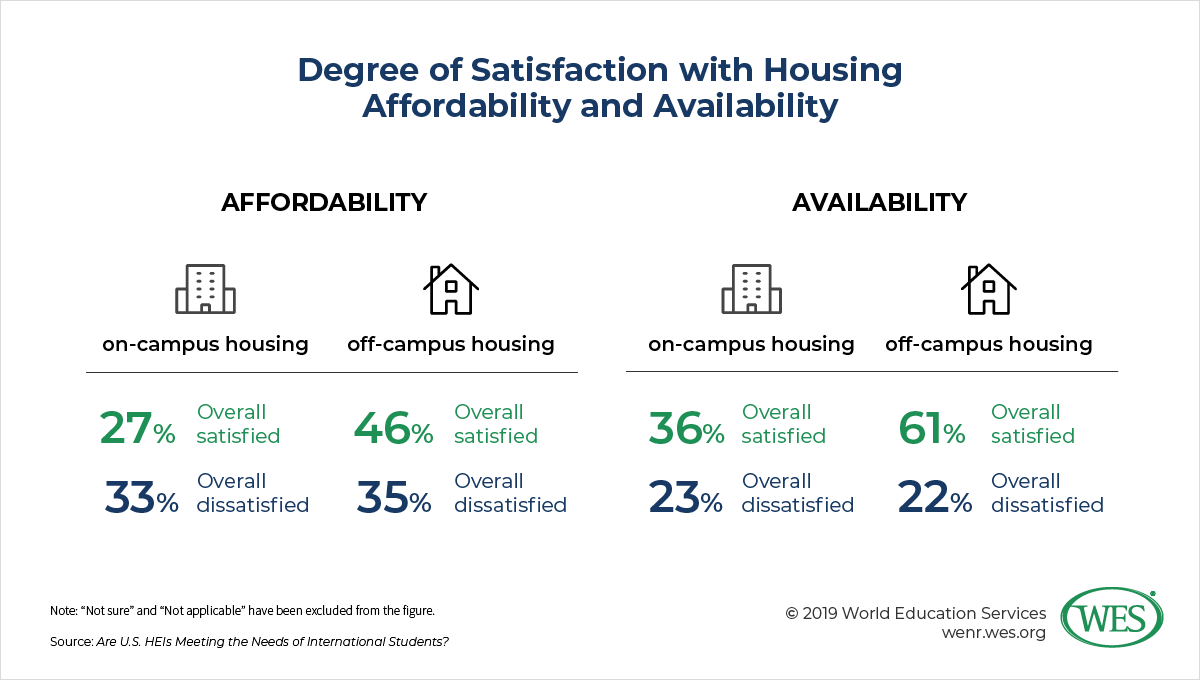To succeed in the United States, international students often rely on the services provided by their institutions. While they typically require much of the same support as domestic students, they usually face additional challenges, notably academic and cultural adjustment, proficiency in the English language, and complex immigration regulations. Success is, of course, ultimately the responsibility of students. However, U.S. institutions should take steps to meet these students’ unique needs, particularly considering the vast sums of money these students pay to attend them.
Additionally, after years of record growth, the U.S. higher education sector is facing the specter of declining international student enrollment. The factors behind this trend are numerous, but chief among them are stiff competition from other major host nations—such as Australia, Canada, Germany, and even China—and the current political climate, as well as the sheer cost of a U.S. education. Many U.S. institutions face enormous obstacles recruiting international students. But focusing attention and efforts on current students and their experiences may help institutions weather the storm, as research consistently shows that international students who have great experiences are more likely to recommend their institution to peers back home.
To gain a nationwide picture of international student experiences in U.S. higher education, World Education Services (WES) conducted a two-part study of current international students and recent graduates. The first part, an online focus group of 23 current international students, was conducted in January 2019 through an online bulletin board. These students represented 15 countries and campuses across the U.S. The second part comprised an online survey that collected 1,921 valid responses from current international students and recent graduates. Both the online focus group and survey collected rich data and insights from students, including recommendations for improving services for international students. With this information, institutions can reflect on the services they offer and consider where they have the capacity to develop them further.
This article provides some top findings, highlights, and recommendations from the report. Download the free report from the WES website for an even fuller picture.
Overall Satisfaction
The majority of students—91 percent—are satisfied with their U.S. education. Overall satisfaction appears highest among sub-Saharan African students (95 percent), a finding consistent with WES’ 2016 research study. Satisfaction has also improved among Middle Eastern and North African (MENA) students since that time.
PEER RELATIONSHIPS
Relationships with peers—both domestic and international—are crucial for overall international student well-being and ability to integrate. However, a significant number of students struggle with developing a robust social network.
Top Findings
- More than a quarter (29 percent) of international students in the study said they do not have a strong social network at school. In particular, Chinese students seem to struggle in this area, with only 56 percent reporting close social bonds on campus. This difficulty may be related to English language ability or confidence.
- International students experience significantly more difficulties developing friendships with U.S. domestic students than they do forming friendships with students from their home country or from different countries. Only 54 percent said it was easy to form close relationships with U.S. students, compared with 86 percent who were able to form relationships with students from their own country. Latin American and Caribbean students cited the most difficulty befriending domestic students (51 percent).
- Most students (78 percent) were satisfied with the level of diversity of the student body at their institution. However, a few students noted that they were surprised to find upon starting classes that their programs were dominated by international students from only one country.
Key Takeaways
While institutions cannot directly create friendships among students, there are ways that they can facilitate the development of such relationships. In particular, institutions should think about ways to reduce barriers to friendships between international and domestic students.
- Provide both domestic and international students with cross-cultural training. Domestic students should also be made aware of the presence and importance of international students on campus.
- Develop programs to help international students who are non-native English speakers improve their language skills. These programs, however, need to be well-structured and -facilitated to avoid being mired in cross-cultural communication problems.
- Recruit a diverse international student body to ensure that no campus program becomes dominated by one nationality.
- Encourage international students to get involved in campus activities. Emphasize the social and career benefits of such involvement, such as the development of a professional network. Remind the students at multiple points throughout their time on campus, not just at arrival and orientation.
FACULTY RELATIONSHIPS AND ACADEMIC SATISFACTION
Faculty and academics are among the biggest draws that attract international students to U.S. institutions. As a result, relationships with faculty members, ranging from tenured professors to teaching assistants (TAs), are among the most important for international students.
Top Findings
- International students view the faculty and academics at their institution positively. Most (92 percent) say that faculty members are welcoming to them, and most find their overall programs and the teaching to be of high quality (both 89 percent).
- Of students who do not have positive experiences with professors, some cite that the coursework is U.S.-centric and requires extensive knowledge of U.S. culture, forcing international students to take extra time on assignments.
- Over half (59 percent) of students found that the time it took to complete their academic coursework was much more than they expected, likely reflecting pedagogical differences between higher education in the U.S. and that of other countries. For example, professors in the U.S. tend to use continuous assessment and assign more projects and papers. In many other education systems, it is common to be assessed only via a final examination. Language is also likely a factor for many students.
- Around one-third of students reported that stress from their coursework is affecting their mental health. Southeast Asian (49 percent), MENA (43 percent), and East Asian (40 percent) students report the highest levels of academically related stress impacting their mental health.
Key Takeaways
Encouragingly, a large proportion of international students are highly satisfied with their academic experiences on campus, particularly in terms of relationships with faculty. However, the report shows that more can be done to help students adjust academically.
- Provide faculty with training in teaching and supporting international students. In particular, some faculty may need assistance with how to make coursework more inclusive of international students who are less familiar with U.S. culture. It may also be worth encouraging faculty to incorporate the unique perspectives and experiences of international students.
- Provide students with clearer time estimates of coursework and an overview of U.S. classroom and assessment practices.
Welcoming International Students to the U.S.
One of the biggest concerns surrounding international students recently is whether or not they feel welcome in the U.S., given the current state of U.S. politics and debates surrounding immigration. The good news is that most international students in the U.S.—79 percent—do feel welcome here. (That said, we do not know the feelings among prospective students who have yet to come to the U.S.) Interestingly, students from the MENA region were most likely to state that the U.S. is a welcoming place (86 percent). By contrast, students from Latin America and the Caribbean were the least likely to feel welcome (68 percent). This perception likely reflects, among other factors, ongoing national political debates surrounding immigration and the southern border with Mexico, where many migrants from the region are coming to seek asylum in the U.S.
ADMINISTRATIVE STAFF RELATIONSHIPS
Administrative staff are typically the first people with whom international students communicate and interact, from recruiters and admissions officers, to officers from the international student office who issue I-20s and other visa-related paperwork, to those who handle student financial issues. Once the students are in the U.S. and on campus, individuals from these offices provide them with vital information that helps them get acclimated.
Top Findings
- Ninety percent of students find administrative staff to be welcoming.
- Eighty percent are satisfied with their international student office, typically one of the offices with which they interact the most.
- There is lower satisfaction (58 percent) with information on how to set up a U.S. bank account.
- Most international students (77 percent) are happy with the immigration advising they receive on campus.
- European and MENA students are considerably less satisfied (62 percent and 65 percent).
- The highest overall dissatisfaction rates were among students from MENA (14 percent) and from Latin America and the Caribbean (11 percent), a region front and center in the debate over immigration policy in the U.S.
- International student use of learning support services, such as the Writing Center and TA office hours, varies greatly. The Disability Resource Center is the least used of the services included in the survey, with only 7 percent of students using it often and 6 percent occasionally. This may partly be because the term “disability” is more expansive in the U.S. than elsewhere—including, for example, learning differences.
Key Takeaways
Many institutions can build on the great work already done by their administrative offices, particularly the international student office.
- Ensure that international student advisors remain up to date on regulatory issues in order to assist students appropriately.
- Provide students with a list of local banks along with clear information on how to set up a U.S. bank account.
- Find ways to increase students’ awareness of learning support services on campus. Faculty members are particularly well-placed to inform, remind, and encourage students who need such services.
IDENTITY AND ACCULTURATION
Living in a new country, international students must adapt to their new host society and also retain a sense of self that is rooted in their own culture. This can often be a challenging process that can lead to homesickness, among other problems.
Top Findings
- Living away from home and family is a top acculturation challenge for many international students (with 38 percent finding it more challenging than expected), but it is particularly acute for South and Central Asian students (47 percent).
- About one-third of all international students found adjusting to U.S. culture to be more challenging than expected, and 20 percent found the language barrier to be greater than expected. In particular, idiomatic U.S. English can be a challenge for many international students.
- Compared with their domestic counterparts, international students face more hurdles maintaining their mental health, in part because of cultural adjustment and language. Additionally, mental health is viewed differently in other cultures. Some respondents indicated that it is stigmatized or not even believed to be real back home.
- Most students indicated that their campus provides sufficient space for them to practice their religion (62 percent), an important component of overall well-being for many students. In particular, sub-Saharan African students, who are most likely Christian or Muslim, are satisfied in this regard (79 percent). About one-quarter of students said that space for religious practice was not applicable for them.
Key Takeaways
- Provide mental health and counseling services that are culturally sensitive and, where possible, available in languages other than English. Institutions may need to help destigmatize mental health services among certain international student groups.
- Provide sufficient and inclusive religious spaces on campus. These would include necessary functions for religious practice, such as wash stations and prayer rugs.
Discrimination
While the majority of international students in our study said that they have not experienced discrimination because of their nationality, nearly one-third (31 percent) said they had. East Asian (including 40 percent of Chinese students), MENA, and sub-Saharan African students most often cited instances of discrimination. European students cited it the least.
DAILY LIFE
Beyond attending to their academics and forming relationships, students focus much of their attention on day-to-day living: housing, food, transportation, and the like. While academics and social activities are crucial components of the international student experience, institutions should not ignore the facets of daily life that can make or break a student’s academic journey.
Top Findings
- Finding safe, affordable housing is a top challenge for international students; 30 percent said it was more challenging than expected. Typical challenges cited in other research include a lack of credit history, higher upfront costs for international students, and even occasionally discrimination[1].
- Most students in our study live off campus, a reflection of the larger number of graduate students in the sample. Within the overall sample, undergraduates are three times more likely than graduate students to live on campus, and six times more likely than students pursuing an associate degree—who usually attend community colleges which are typically commuter schools. Students at rural institutions are more likely to live on campus (25 percent) compared with those in urban areas (13 percent).
- About one-third of international students are dissatisfied with the cost of housing. However, they are twice as satisfied with the cost of off-campus housing versus on-campus housing. Students are also more satisfied with the availability of off-campus housing.
- About half of students find transportation challenging. In particular, students in the Southwest (63 percent) and at rural institutions (72 percent) find transportation challenging. Cities in the Southwest are typically less dense and offer fewer public transit options (compared with the Northeast).
- About one-quarter of students (24 percent) say that the food on campus does not meet their dietary needs. Their chief complaints are lack of options (56 percent), lack of food from their home country (49 percent), and high prices (42 percent).
Key Takeaways
- Provide diverse ways for students to secure off-campus housing as well as on-campus. Ideally, on-campus housing should be competitively priced with off-campus housing. Institutions can also provide more support to students in finding off-campus housing, including online groups or message boards for students to post or look for housing opportunities, and advice on applying for off-campus housing.
- Consider various ways to support students’ transportation needs. Provide information on using the local bus system, or instructions on how to apply for a driver’s license and buy a car (particularly in more suburban and rural areas). A shuttle service to key destinations in town, such as the local grocery store, can also help international students.
- Provide more variety of food options for international students.
CONCLUSION
When international students have positive experiences and succeed, the benefits accrue not just to the students themselves but also to their institutions. For students, the benefits are often good jobs and promising career trajectories that result from their earned degrees and new connections. They also typically develop the ability to understand and work with people of various backgrounds, as well as a fluency in U.S. culture and the English language. Often, they develop lifelong friendships and relationships; they may (if lucky) immigrate to the U.S. or, if they return home or go elsewhere, maintain ties with the U.S. In turn, HEIs benefit by having international alumni who can provide favorable word-of-mouth referrals to peers and retain ties to the institution well into the future.










